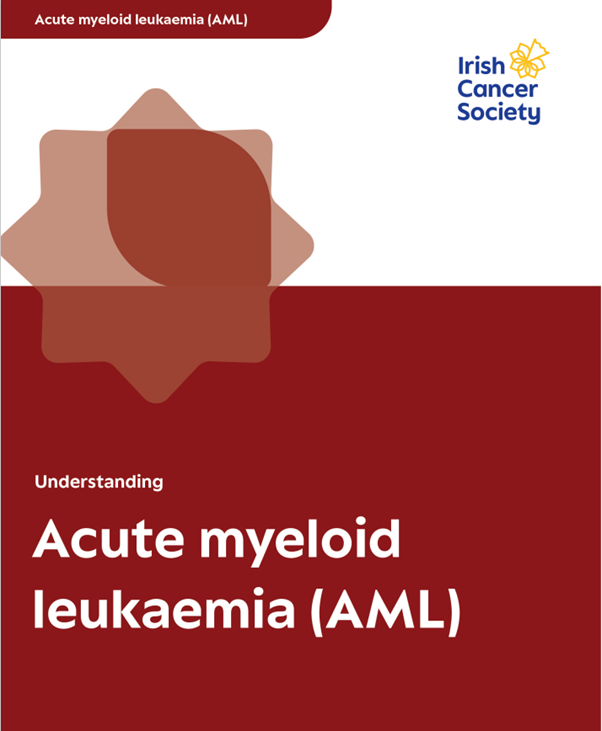Acute myeloid leukaemia (AML)
Acute myeloid leukaemia (AML) is a blood cancer more common in people aged over 65. About 150 people are diagnosed with AML every year.*
Signs and symptoms
Learn about the signs and symptoms of AML. You are more likely to survive cancer if you find it at an earlier stage.
Treatments
There are a number of different treatments available for AML. Your medical team will explain the best treatment options for you.
What is acute myeloid leukaemia (AML)?
Acute myeloid leukaemia (AML) is a fast-growing type of leukaemia (cancer of the blood) which affects myeloid blood cells.
This cancer affects the number of healthy cells in your blood. This can cause problems with fighting infection, carrying oxygen and bleeding.
What are the types of AML?
World Health Organization (WHO) classification
The WHO classification system divides AML into several broad groups by the type of abnormal myeloid cell and if:
- There are genetic changes in the cells.
- The leukaemia developed from a blood disorder.
- The leukaemia developed after chemotherapy and radiotherapy.
- More than one type of blood cell has abnormal changes.
AML risk groups
- Low risk: Your leukaemia is likely to be cured and there’s less chance of the cancer coming back (recurring). Low-risk patients won’t usually need a stem cell transplant, unless their cancer comes back.
- Intermediate risk: It is hard to predict how you will respond to treatment. You may or may not need a stem cell transplant.
- High risk: There’s a high risk of the leukaemia coming back (recurring) so you will have very intensive treatment. You are likely to have a stem cell transplant if you are suitable for one.
Acute promyelocytic leukaemia (APL)
Acute promyelocytic leukaemia (APL) is a sub-type of AML. APL is treated differently to other forms of AML, as it responds well to certain non-chemotherapy drugs, for example, all-trans retinoic acid (ATRA).
APL is usually treated with a combination of drugs, which may include chemotherapy drugs.
Freephone 1800 200 700 or visit a
Daffodil Centre for more information
Medical content updated from our 'Understanding acute myeloid leukaemia (AML)' booklet (2025). Reviewed by Dr Vitaliy Mykytiv, Consultant Haematologst; Dr Rachel Brodie, Consultant Haematologist; Chandan D'Souza, Haematology Clinical Nurse Specialist; Milie Mathew, Daffodil Centre Nurse.
Continue reading about acute myeloid leukaemia (AML)
Talk to a Cancer Nurse

Support Line
Our Daffodil Centres

*The Irish Cancer Society uses the most up-to-date cancer statistics from the National Cancer Registry Ireland, available on www.ncri.ie

